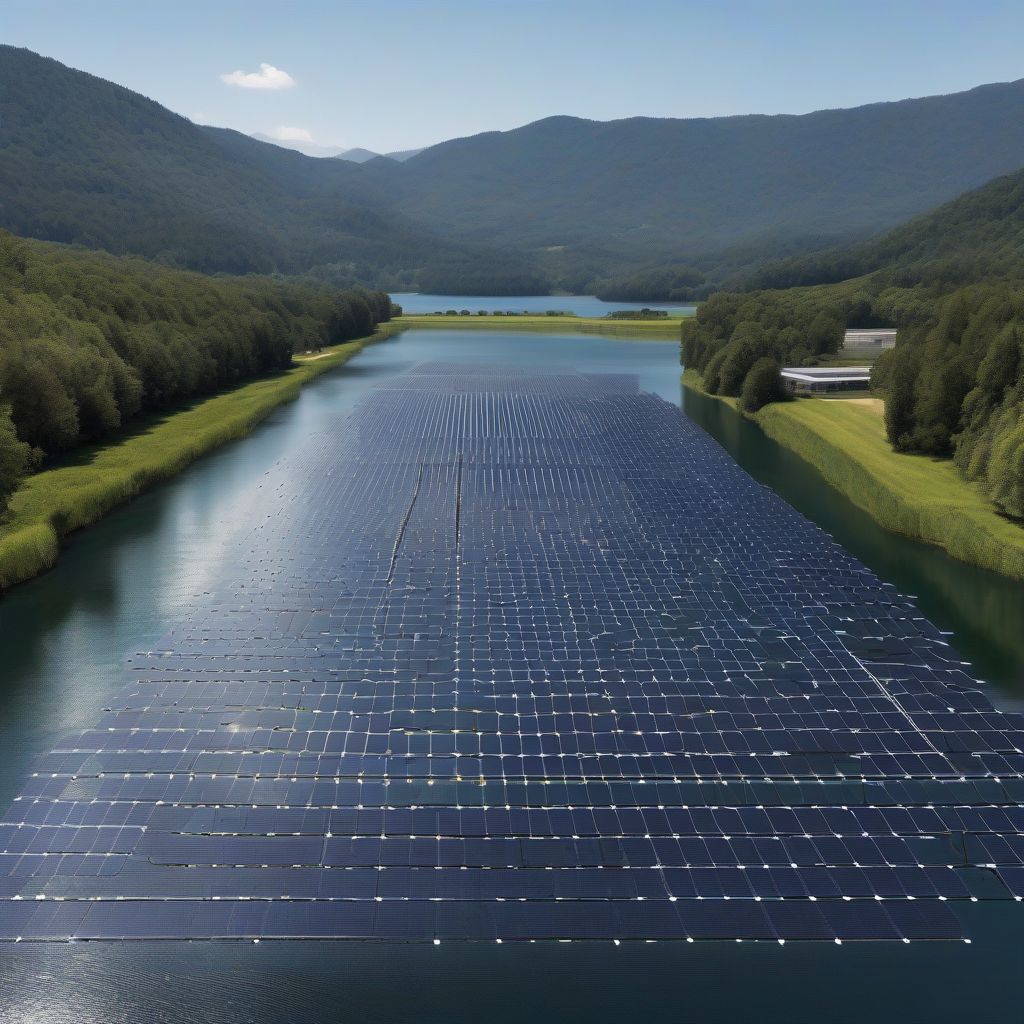Imagine a world where vast expanses of water bodies become clean energy generators, powering our homes and industries. This vision is quickly becoming a reality with the rise of floating solar farms, a revolutionary technology poised to transform the renewable energy landscape. The future of floating solar farms and their impact is a topic of immense interest and potential, promising a sustainable solution to our growing energy demands.
What are Floating Solar Farms?
Floating solar farms, also known as “floatovoltaics,” are photovoltaic solar power systems mounted on structures that float on water bodies like reservoirs, lakes, and even oceans. These innovative systems offer a compelling alternative to traditional land-based solar farms, particularly in regions with limited land availability or competing land-use interests.
The Advantages of Floating Solar
Land Conservation:
One of the most significant advantages of floating solar is its ability to conserve valuable land resources. By utilizing water surfaces, these farms avoid competition with agriculture, urban development, and natural ecosystems. “Land is a precious commodity,” says a hypothetical renewable energy expert, Dr. Anya Sharma, author of “The Power of the Sun: Floating Solar’s Promise.” “Floating solar allows us to generate clean energy without sacrificing vital terrestrial resources.”
Water Efficiency:
Floating solar farms can also contribute to water conservation. The presence of the panels reduces evaporation from the water surface, which can be particularly beneficial in arid and semi-arid regions. Furthermore, the shade provided by the panels can inhibit the growth of algae, improving water quality.
Increased Efficiency:
The cool water beneath the panels can help to regulate the temperature of the solar modules, improving their efficiency. Overheating is a common issue with land-based solar panels, leading to reduced power output. Floating solar farms mitigate this problem, maximizing energy generation.
Synergies with Existing Infrastructure:
Floating solar farms can be easily integrated with existing hydropower facilities, sharing grid connections and reducing infrastructure costs. This synergistic approach optimizes resource utilization and enhances the overall efficiency of the energy system.
The Impact of Floating Solar Farms
Environmental Benefits:
Floating solar offers a significant environmental advantage by reducing greenhouse gas emissions and promoting a transition to cleaner energy sources. This helps mitigate climate change and improve air quality.
Economic Opportunities:
The development and deployment of floating solar farms create new economic opportunities, including jobs in manufacturing, installation, and maintenance. This can stimulate local economies and promote sustainable development.
Energy Security:
By diversifying energy sources and reducing reliance on fossil fuels, floating solar contributes to enhanced energy security. This is particularly important in a world facing geopolitical instability and volatile energy prices.
Challenges and Considerations
Environmental Concerns:
While floating solar offers many environmental benefits, it’s crucial to consider potential impacts on aquatic ecosystems. Careful site selection, environmental impact assessments, and ongoing monitoring are essential to minimize any negative effects.
Cost and Financing:
The initial costs of floating solar can be higher than traditional land-based systems. However, technological advancements and economies of scale are driving down costs, making floating solar increasingly competitive.
Regulatory Frameworks:
Clear regulatory frameworks are needed to facilitate the development and deployment of floating solar farms. This includes streamlining permitting processes and establishing standards for environmental protection.
The Future is Bright
The future of floating solar farms appears incredibly promising. As technology advances and costs decline, these innovative systems are poised to play a significant role in the global transition to renewable energy. Floating solar offers a sustainable solution that conserves land, protects water resources, and generates clean energy, paving the way for a brighter, more sustainable future. “Floating solar is not just a technological marvel,” says another hypothetical expert, Dr. Jian Li, “it’s a symbol of our commitment to a cleaner, more sustainable planet.” This innovative technology is not a fleeting trend, but a powerful solution for a world in need of clean energy solutions. To learn more about the latest advancements in renewable energy technology, check out this article on The Latest Breakthroughs in Green Energy Technology: The Latest Breakthroughs in Green Energy Technology.
 Floating Solar Panels on Water
Floating Solar Panels on Water
Conclusion
Floating solar farms are a revolutionary technology offering a sustainable solution to the world’s growing energy demands. They address land scarcity, improve water quality, and boost energy efficiency. While challenges remain, the potential of this technology is immense. By embracing floating solar, we can create a brighter future powered by clean, renewable energy. We encourage you to share this article and contribute to the conversation. What are your thoughts on the future of floating solar? Leave a comment below!



